 Your new post is loading...
 Your new post is loading...
Although the students had been told at the outset that they should “study something important, including homework, an upcoming examination or project, or reading a book for a course,” it wasn’t long before their attention drifted: Students’ “on-task behavior” started declining around the two-minute mark as they began responding to arriving texts or checking their Facebook feeds. By the time the 15 minutes were up, they had spent only about 65 percent of the observation period actually doing their schoolwork.
"Writing will always be important, but weaving text, images, sound, and presentation together can give students more and different ways to express themselves. Easy-to-use online tools allow students the opportunity to create multimedia projects that demonstrate knowledge and develop useful skills. Check out these new three tools on the scene."
"One overriding challenge is now coming to the fore in public consciousness: We need to reinvent just about everything. Whether scientific advances, technology breakthroughs, new political and economic structures, environmental solutions, or an updated code of ethics for 21st century life, everything is in flux—and everything demands innovative, out of the box thinking."
"When St. Louis fifth-grade teacher Jenny Kavanaugh teaches history, she uses her laptop to look at a map, or to give kids a virtual our of the historical landmarks they’re studying. “Students can interact with history in very cool ways online,” she said." But when it’s time for math, she puts the computer away. Even though Kavanaugh thinks technology is a great tool to enhance and deepen certain lessons, for drill and practice of key concepts in class, she finds one-on-one practice to be much more effective than its technological equivalent – digital practice games.
"Need more convincing that Minecraft can be a powerful tool for learning? Check out this fun video from PBS Idea Channel's Mike Rugnetta, who specifically (and very quickly) lists a number of ways the video game can and has been used to learn everything from physics to history."
"SimCity As game-based learning gains momentum in education circles, teachers increasingly want substantive proof that games are helpful for learning...GlassLab is working with commercial game companies, assessment experts, and those versed in digital classrooms to build SimCityEDU, a downloadable game designed for sixth graders."
"Design thinking can seem a bit abstract to teachers. It’s not part of traditional teacher training programs and has only recently entered the teachers’ vernacular. Design thinking is an approach to learning that includes considering real-world problems, research, analysis, conceiving original ideas, lots of experimentation, and sometimes building things by hand. But few schools have the time or wherewithal to integrate these processes into the school day."
"For many dedicated to re-making our schools as hubs of dynamic innovation and creativity, getting good at math or science or literacy might be better found in techniques like inquiry-based learning, less emphasis on standardized testing, and avoiding the soul-numbing “drill and kill” exercises and worksheets used to instill basic skills. But what if the right drill -- without the kill — actually encourages creativity?"
"Free, unstructured playtime gives kids a chance to discover their interests and tap into their creativity. It’s a crucial element for building resilience in children, an attribute they’ll need in order to become happy, productive adults."
"Educators are always striving to find ways to make curriculum relevant in students’ everyday lives. More and more teachers are using social media around lessons, allowing students to use their cell phones to do research and participate in class, and developing their curriculum around projects to ground learning around an activity. These strategies are all part of a larger goal to help students connect to social and cultural spaces."
"Who knew a YouTube video of a nine-year old boy's cardboard creation would hit such a nerve?" This post updates us on what has happened since Caine's Arcade went viral. The videographer who made Caine's Arcade provides a look at what his cardboard creation has moved others to create. Caine is also in this video sharing his thoughts, including "the three biggest lessons he's learned in the process of this adventure" (quoted below): 1. Start a business that's fun 2. Use recycled stuff 3. Never give up
This post provides a look at "what might happen if educators experimented with some of the lessons YouTube's staggering success has taught us." Ten items are listed, with explanation and a section called "possibility for teachers." The list includes: interdependence, diversity, brevity, selective social interaction, non-traditional, humor, cultural hyperbole, passive consumption, active selection and assisted discovery.
|
"'Often mistaken, never in doubt." That wry phrase describes us all more than we'd like to admit.' The psychological study of misconceptions shows that all of us possess many beliefs that are flawed or flat-out wrong—and also that we cling to these fallacies with remarkable tenacity. Although much of this research concerns misguided notions of how the physical world works, the techniques it has produced can be used to correct any sort of deficient understanding."
"Spark your students’ curiosity in engineering and technology by introducing them to the designers, inventors, and clever thinkers featured in PBS LearningMedia. Use their stories to illustrate various themes of study like the engineering design process and the impact of technology."
"With one billion monthly users (and growing), YouTube's popularity is a pretty clear indication that video is a powerful medium. And kids' unrelenting fascination with videos is motivating many educators to find ways to leverage them for all kinds of purposes."
"Helping students learn how to learn: That's what most educators strive for, and that's the goal of inquiry learning. That skill transfers to other academic subject areas and even to the workplace where employers have consistently said that they want creative, innovative and adaptive thinkers. Inquiry learning is an integrated approach that includes kinds of learning: content, literacy, information literacy, learning how to learn, and social or collaborative skills. Students think about the choices they make throughout the process and the way they feel as they learn. Those observations are as important as the content they learn or the projects they create."
"No device should ever be hailed as the silver bullet in "saving" education -- nor should it be completely shunned -- but when it comes to the possibility of bridging the digital divide between low-income and high-income students, devices may play a pivotal role. ccess to the Internet connects kids to all kinds of information — and for low-income students especially, that access has the power to change their social structure by allowing them to become empowered and engaged..."
"If kids can access information from sources other than school, and if school is no longer the only place where information lives, what, then happens to the role of this institution?"
"A new study from Stanford shows that a simple teaching tactic may help close the achievement gap between Latino American students and their white peers...The matter comes down to overcoming the negative effects of “stereotype threat,” a phenomenon that researchers have identified and documented over the last two decades. What they have found – in numerous studies – is that the stress and uncertain sense of belonging that can stem from being a member of a negatively stereotyped group undermines academic performance of minority students as compared with white students."
"We all know that confusion doesn't feel good. Because it seems like an obstacle to learning, we try to arrange educational experiences and training sessions so that learners will encounter as little confusion as possible. But as is so often the case when it comes to learning, our intuitions here are exactly wrong."
"As any parent or teacher knows, tests can create crippling anxiety in students–and anxious kids can perform below their true abilities. But new research in cognitive science and psychology is giving us a clearer understanding of the link between stress and performance, and allowing experts to develop specific strategies for helping kids manage their fears."
"Getty “Polynomial functions!” “Trig identities!” “How about the properties? Commutative, associative, distributive.” So unfolded a laundry list of what a group of math teachers considered the more painful and less necessary concepts covered in the average high school math curriculum.
"Temple Run...What does the popular video game Temple Run have anything to do with algebra?" Check out some of the new materials available at CK12 and you will find that they are using Temple Run as "a real-world application of using algebra." CK12 has been providing open education resources (OER) for quite a few years and "has recently added more interactive resources to its offerings, including quizzes, videos, and real-world application examples." For additional information on new features click through to the post, or go directly to CK12 at http://www.ck12.org/.
A look at why you might want to connect your students with students in other parts of the world (by two educators whom do this) as well as three resources to help you start on global collaboration. Five reasons with explanations are provided for the why, such as: * Working with students from different culture motivates students * It's easy to incorporate core curriculum lessons into global collaborations * It encourages problem solving For more information click through to the post.
|
 Your new post is loading...
Your new post is loading...
 Your new post is loading...
Your new post is loading...









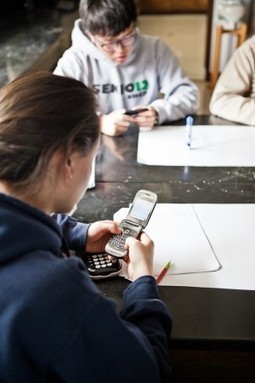



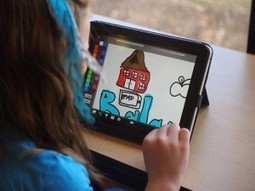


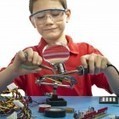


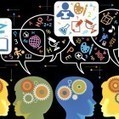




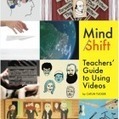



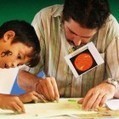











This post looks at how multi-tasking in impacting student work. Although based on a recent study the post states that there is "a growing body of research focused on a very particular use of technology: media multitaskingwhile learning." The evidence shows "learning is far spottier and shallower than if the work had their full attention. They understand and remember less, and they have greater difficulty transferring their learning to new contexts."
After a brief review of a number of studies the post looks at information about the brain and multitasking as well as what might be done to help students prioritize.
Links to resources are provided within the article.